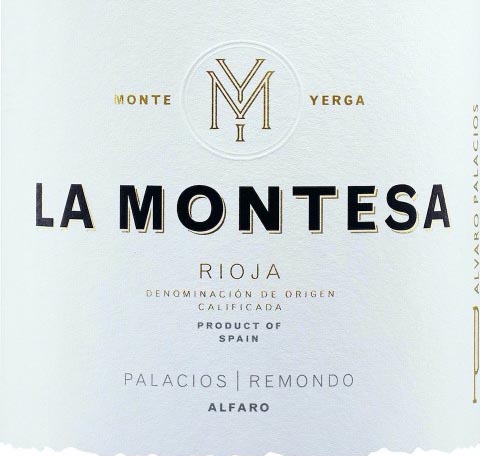
Monsieur Touton Selection, Ltd.
212-255-0674
contact@mtouton.com
www.mtouton.com
Palacios Remondo - La Montesa2017
RED WINE
PUBLIC
February 2025
Prices and availability subject to confirmation

-
Blend
95% Garnacha
5% Other - Country Spain
- Region Rioja
- UPC 877397001589
Technical Details
Estate
If anyone embodies the promise and spirit of “The New Spain,” it is winemaker Alvaro Palacios. Born into a wine family in Rioja, he now makes wine in three different appellations: Priorat, Bierzo, and his hometown of Alfaro in Rioja. Alvaro’s flagship Priorat wine, L’Ermita, is one of the most coveted wines in all of Spain. Following his great successes in Priorat and Bierzo during the 1990s, and the death of his father in 2000, Alvaro Palacios took the helm of Palacios Remondo, his family’s property and winery in Rioja Baja.Vineyard
Located at an altitude of 1,800 feet, Palacios Remondo’s vineyards are grown at some of the highest points in Rioja. The 30-year-old head-trained vines are hand-harvested, grown organically, and very narrowly spaced (3,000 plants per hectare). Soil is comprised of sediments that stem from the Quaternary Era, consisting of clay and a stony-calcareous subsoil, covered in stones, with excellent drainage. Very low in organic material and with a moderated basic pH, the soil is perfect for growing high quality fruit. By dry-farming and dropping close to 40% of their fruit, Palacios Remondo ensures only the highest quality fruit is picked during harvest.History
The Palacios Remondo winery history stretches back five generations when the D.O.C. Rioja was first gaining notoriety as one of the premier winemaking regions of the world. José Palacios Remondo, father of renowned winemaker Alvaro Palacios, reestablished the estate in 1945. Alvaro Palacios, born at his family’s winery in Alfaro, became one of Spain’s winemaking pioneers for his successes in Priorat and Bierzo and was recently voted Decanter Magazine’s Man of the Year (March, 2015). In 2000, upon his father’s death, Alvaro assumed responsibility for Palacios Remondo, and committed to taking the estate’s quality to new heights. Under his inspired leadership, Palacios Remondo is now a rising star of Rioja.Tasting notes
Named after a hillside vineyard located on the northeastern slope of the Yerga mountain in eastern Rioja, La Montesa is a blend of the indigenous grape varieties that grow on the Palacios Remondo estate. Juicy and lush, with notes of cherry, raspberry and orange peel that meld with Mediterranean herbal undertones to create a wine that is balanced, bright and lively. Aged 12 month in barrel and bottled unfiltered. 95% Garnacha & 5% Other red grapesTechnical data
Age of vines: 32 years.Planting density of vines: 1,214 vines per Acre / 3,000 vines per Ha.
Pruning style: Double cordon Royat and bush wines.
Irrigation: No.
Green harvesting: Yes, just one bunch by vine shoot.
Harvesting: Hand.
Alcoholic fermentation: Spontaneous in inox vats and pump over. Native yeast.
Maceration: 35 days.
Malolactic fermentation: Stainless steel vats.
Ageing: 12 months in barrels.
Clarification: Yes.
Cold stabilisation: No.
Filtering: Unfiltered.